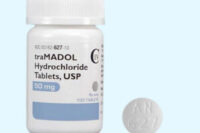Generic Tramadol Pills
Showing all 4 resultsSorted by popularity
Generic Tramadol 100 mg
Generic Tramadol 200 mg
Generic Tramadol 50 mg
Generic Tramadol 37.5/325 mg
Pain is something that can happen to anyone, and the right way to deal with it is still essential if a person wants to keep their quality of life at a good level. Tramadol is among the top five drugs that a doctor might prescribe in a case of moderate to severe pain. A lot of people elect to buy Tramadol online so as to save both their time and money. Nevertheless, if you are planning to order Tramadol online, it is necessary first to know the drug’s purpose, dosage, side effects, and precautions. This manual serves as a helping hand in making up your mind about using this medicine for pain relief safely and correctly.
Specific Points to Know Before Purchasing Tramadol Pills Online
In case you opt to buy Tramadol online, don’t forget that you should only purchase from a safe and authorized drugstore. Counterfeit websites may offer fake drugs that might be unsafe for your health. An online pharmacy should always be checked for the requirement of a Tramadol prescription. Since this is a tightly controlled drug in most countries.
Before you purchase Tramadol online, get acquainted with:
- The right Tramadol dose and concentration are Tramadol 50 mg, 100 mg Tramadol pill, 200 mg Tramadol & Tramadol 37.5-325 mg.
- The Tramadol white round pill or Tramadol HCL 50mg imprint is for the confirmation of the product.
- Possible Tramadol side effects and the interaction with other medications.
- If Tramadol over the counter in your area, and whether such a practice is legal (most of the time it is not).
Safe buying means that you get authentic Tramadol medicine, which is effective and does not endanger your health.
What is Tramadol?
In case you ask the question, “What is Tramadol?” the answer will be that it is a drug used to relieve pain which is given to patients when their pain is from moderate to moderately severe. It is among the drugs grouped under the class of opioid analgesics. A significant number of people Hercules to find out if Tramadol pills is an opioid or a narcotic. The answer is that, as far as the addiction is concerned. Tramadol behaves like an opioid because it changes the brain’s pain receptors in the same way, even though it is regarded as being less potent than the likes of morphine.
Tramadol acetaminophen tablet is a different form that features the combination of Tramadol and acetaminophen (Tylenol) for additional pain relief. Please, be sure to work out your doctor’s treatment plan and avoid taking this medicine on your own.
How Does Tramadol Work?
Such a change causes the entire body to feel different and to receive pain signals differently. In addition, the drug also raises a few neurotransmitters such as serotonin and norepinephrine. Which are both involved in the alleviation of pain and elevation of the mood.
Some people might wonder if Tramadol causes sleepiness. The answer is, it could bring about drowsiness or a feeling of being light-headed, as releasing the nervous system gives a tranquil state. Until you have figured out how Tramadol affects you, do not drive or operate machinery.
The effect of the drug varies with the quantity of the drug consumed. For instance, some patients ask the question of how strong 50 mg Tramadol is. As a rule, a 50 milligram Tramadol tablet is enough to relieve the pain of a moderate nature, and a medical practitioner is likely to give a stronger dosage, such as a 100 mg Tramadol tablet or 200 mg Tramadol for a painful condition of intensity higher than moderate.
Medical Uses of Tramadol
Tramadol uses are extended to the treatment of several pain-related conditions, e.g.
- Post-surgical pain
- Chronic back pain
- Muscle and joint pain
- Nerve pain
- Fibromyalgia
- Dental pain
On the bright side, vets also use Tramadol for dogs when they want to help their furry friends relieve pain after a traumatic event or operation. But the dose and way of giving are very different from those of humans, so if not confirmed by the vet, don’t put the human Tramadol tablets in the animal’s mouth.
Hence, the people asking what Tramadol is used for, the answer would be mostly as a means of pain control, both acute and chronic.
Tramadol Dosing Information
The right Tramadol dose is mainly determined by your age, health condition, and pain level. Usually, the generic Tramadol 50 mg tablets are the first dose, with a single intake every 4-6 hours as a pain relief. A physician may step up your dose bit by bit, but typically, the daily dose for an adult will not be more than 400 mg.
Moreover, a long-acting version is there for people with persistent pain who require a constant analgesic effect throughout the day. Tramadol HCL 50mg or any other higher dose like generic Tramadol 100 mg should be taken medically prescribed strictly, without fail.
Note*
- Please do not split the tablets or chew them by any means.
- Make sure that your dosage does not exceed the prescribed limit.
- If you intend to discontinue the use of the medicine do it gradually to avoid withdrawal symptoms.
If you are not sure, talk to your doctor and get the question about how long does Tramadol stay in the system or how often it should be taken.
Tramadol Side Effects
On the other hand, every medicine may cause side effects, and Tramadol is not an exception.
Common side effects:
- Vomiting
- Constipation
- Headache
- Dizziness
- Sweating
Severe side effects:
- Shortness of breath
- Seizures
- Lack of understanding
- Hypersensitivity
In case you experience any of these, get medical attention without delay. Using the medicine in a controlled manner lowers the probability of such dangers to a great extent.
Drug Interactions of Tramadol Online
Tramadol, just like most painkillers, can cause some problems if taken together with other drugs. Some of the most common Tramadol interactions are with antidepressants, sleeping pills, seizure medications, and other opioid drugs. Usage of such mixtures may lead to an increased occurrence of side effects such as fainting, lack of orientation, and breathing problems.
Before initiating the use of Tramadol drug in your therapy, inform your doctor if you are taking drugs for depression, anxiety, or high blood pressure. It is also better not to take alcohol because the sedative effect can be enhanced. Therefore, it may cause very dangerous reactions.
Always verify the safety details when purchasing or ordering Tramadol online to make sure that there will be no conflicts between your drugs. It is forbidden to use Tramadol with other pain relievers without instructions from your care team. Though they belong to the opioid family, that’s why amplify each other’s effects. It is not suggest to take Tramadol and Vicodin or Tramadol Vs Oxycodone together. If you take them together the danger of harmful effects and overdosing symptoms will increased anonymously. To avoid this get immediate medical attention if you feels excessive fatigue, dizziness breathing problems, or abrupt changes in heartbeat.
Tramadol Warnings to Take Care Of
It’s necessary to remember a few warnings while using the medication:
- Tramadol should not be used in a person with severe asthma or respiratory problems, or in one who has a history of drug abuse.
- Compared to a normal situation, if you are pregnant, avoid the use of this medicine unless a doctor gives you an exact instruction.
- Old people should take stepwise lower doses since their metabolism is slower.
- Never combine alcohol and Tramadol.
- Children and pets shouldn’t get access to it.
Another very important thing is the knowledge that Tramadol can be addictive. Yes, it has the potential to be a habit-forming substance if it is misused or if it is used for a long period of time. Always adhere to the instructions of your Tramadol prescription and in case of dependency, talk which your doctor.
Benefits of Tramadol Drug
If used properly, Tramadol is capable of delivering a great deal of benefits; these are a few of them:
- One of the major benefits is that it can effectively relieve acute as well as chronic pain.
- Moreover, it is effective against different types of pain, e.g., neuropathic, arthritic, and postoperative pain.
- There are a number of different strengths available (as in Tramadol 50 mg and Tramadol HCL 50mg) so that anyone can get the right dose for him/herself.
- By lessening the pain, it is possible that the patient becomes more active and his/her quality of life improves.
Tramadol can be a dependable source of pain relief for people who are on their way to regaining health after surgery or those who have to live with chronic conditions.








